Data collection (eBR example)
📝 Looking to implement Rhize for your Pharma operation? Talk to an engineer
This document provides examples of how you can use Rhize to automatically ingest data from various sources and store it in a standardized ISA-95 schema. The examples here are to produce an Electronic Batch Record, an important use case in pharmaceutical manufacturing. However, the process described here is very similar to what data collection would look like when integrating with any third-party system (such as an MRP, CMMS, and so on), regardless of the type of manufacturing process.
The procedure has the following steps:
- Identify the sources of data.
- Map the fields for these data sources to Rhize’s ISA-95 schema.
- Write BPMN processes that listen for relevant eBR events and transform incoming data to the ISA-95 schema.
- After the batch finishes, query the database with the fields for your eBR.
The following sections describe this process in a bit more detail.
Prerequisites
This procedure involves multiple data sources and different operations to transform the incoming data and store it in the graph database. Before you start, ensure that you have the following:
- Awareness of the different sources of eBR data
- If real-time data comes from equipment, Connected data sources
- Sufficient knowledge of the ISA-95 standard to model the input data as ISA-95 schema
- In the BPMN process, the ability to filter JSON and call the GraphQL API
In larger operations, different teams may help with different parts of the eBR-creation process. For example, your integrators may help appropriately model the data, and the frontend team may render the outputted JSON into a final document.
Steps to automate eBR creation
The following steps describe the broad procedure to automatically update the database for incoming batch data, then automatically create an eBR after the batch run.
Identify the sources of data
The first step is to identify the sources of data for your eBR.
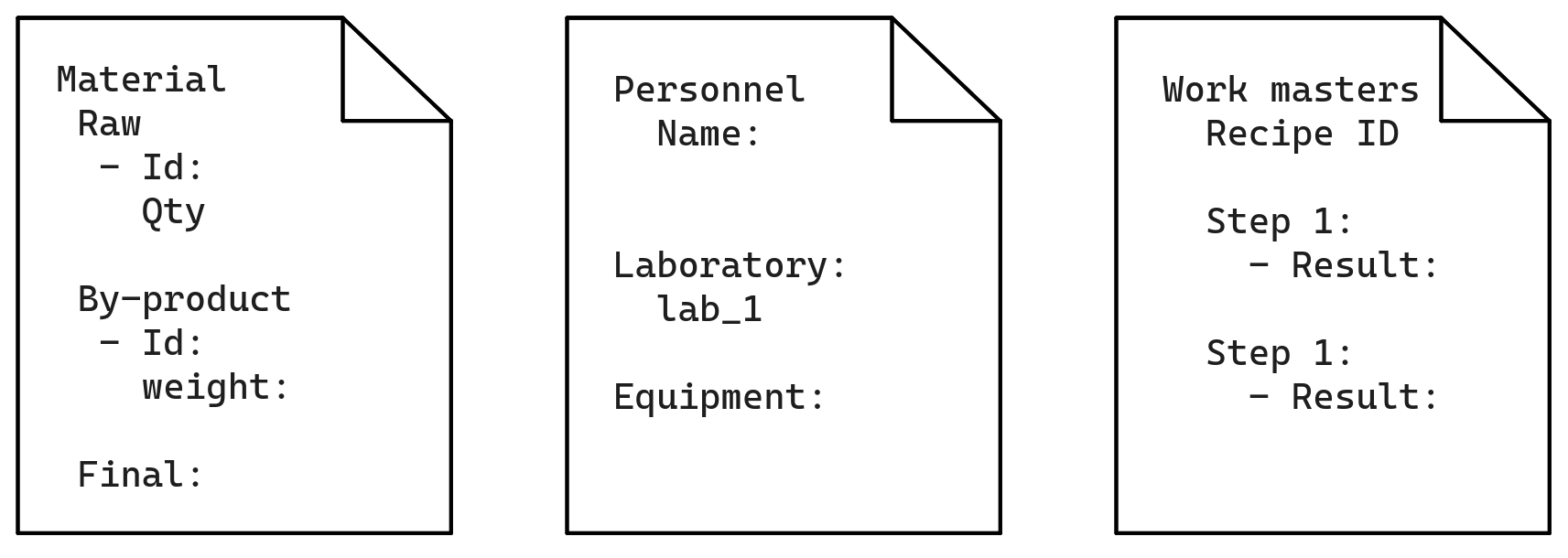
Common data sources for an eBR include:
- ERP documents: high-level operations documents. This might include information about planning and scheduling.
- MES data: granular process data, tracking objects such as the weight of individual material and the responses for different jobs.
- LIMS documents: information about the laboratory environment and testing samples
- Real-time event data: for example, data sent from OPC UA or MQTT servers
- Exceptions: Errors and alerts raised from the operator screen or automation system
Model the fields as ISA-95 schema
After you’ve identified the source data, the next step is to map this data into ISA-95 models.
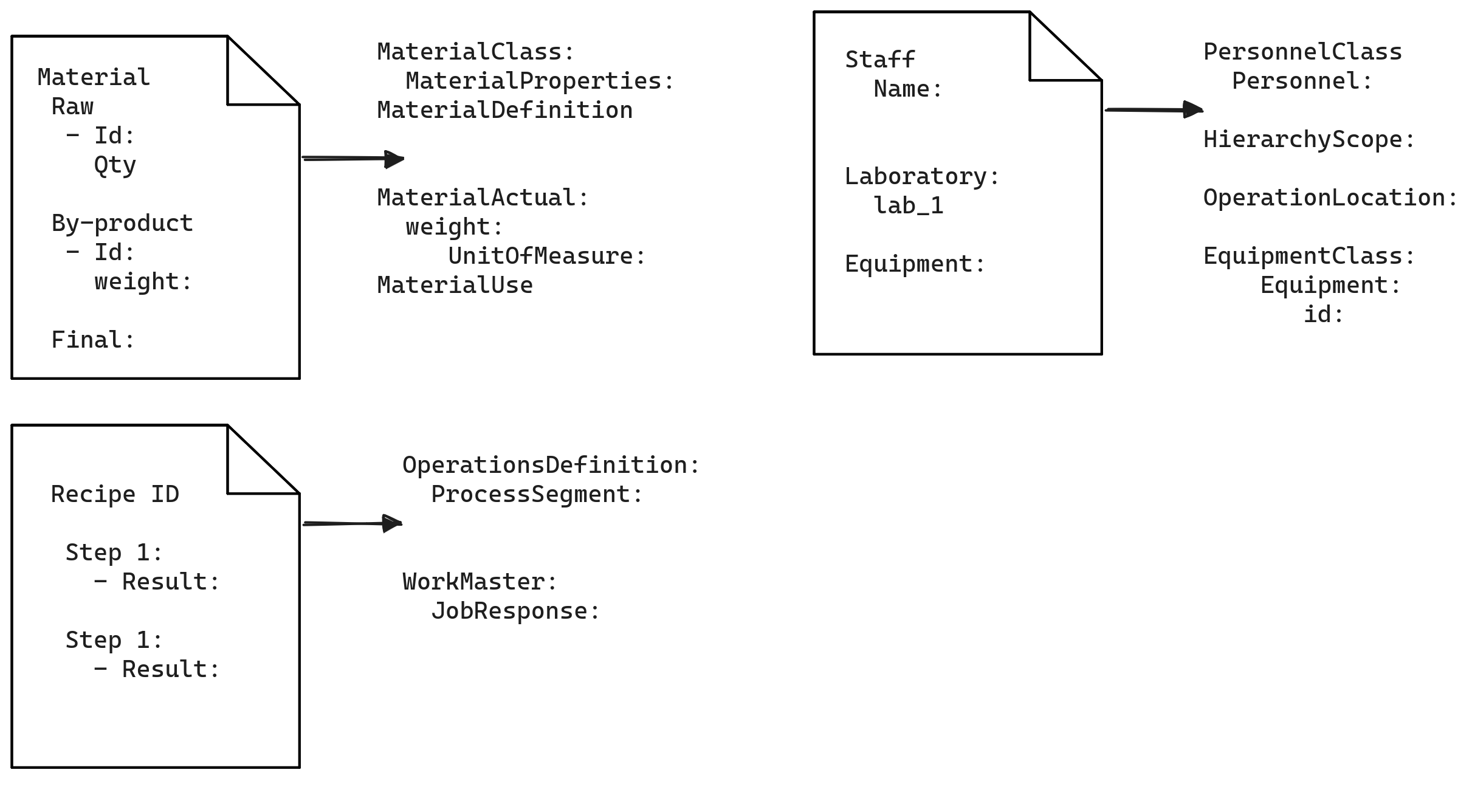
Some common objects to map include raw and final material, equipment, personnel, operations schedule, segments, job responses, exceptions, and the ERP batch number. Once ingested, all data is linked through common associations in the graph database and is thus accessible through a single query.
Write a BPMN workflow to ingest the data in real-time
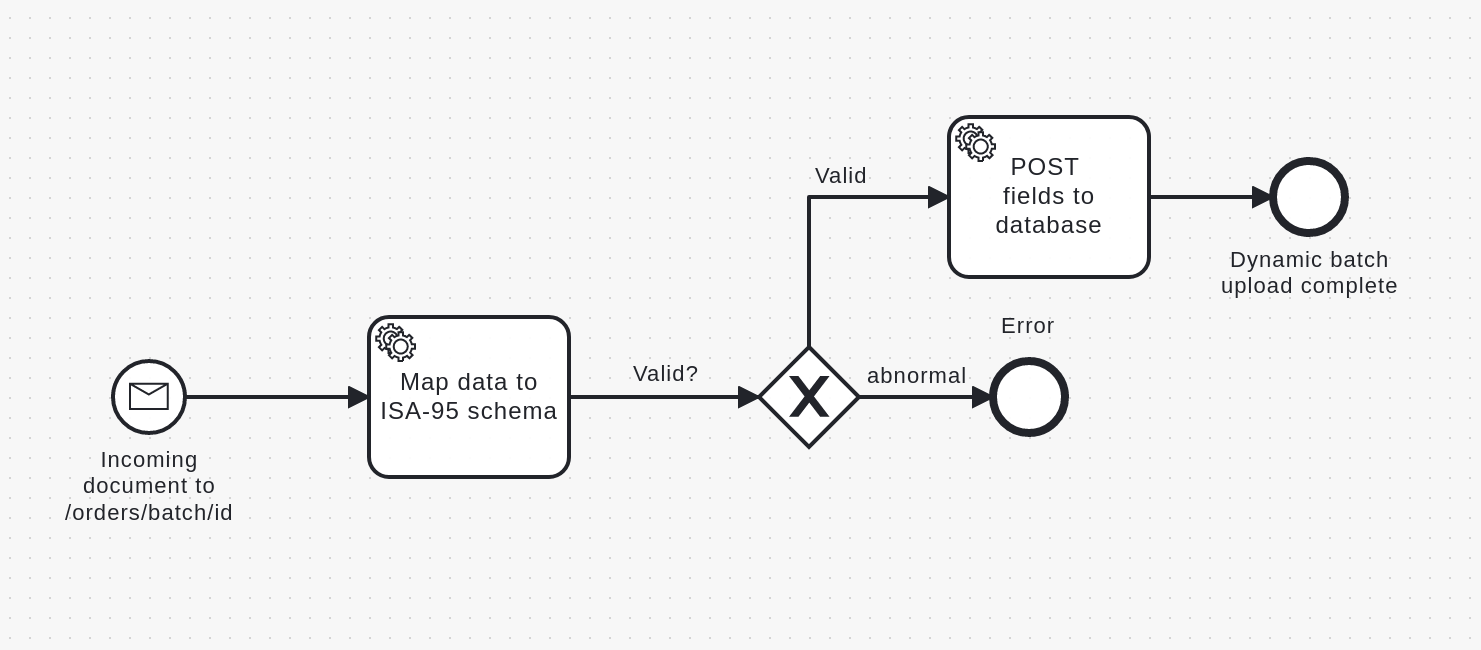
With the sources of data and their corresponding models, the next step is to write a BPMN workflow to automatically transform the data and update the database.
The procedure is as follows:
Create a BPMN that is triggered by a relevant eBR event. For example, the workflow might subscribe to a
/lims/lab1, or be triggered by a call to the Rhize API. If the data comes from certain equipment, you first need to Connect a data source.Transform with JSONata
Rhize has a built-in JSONata interpreter, which can filter and transform JSON. Use a JSONata service task to map the data sources into the corresponding ISA-95 fields that you defined on the previous step.
Use the output as a variable for the next step.
POST data with a graph mutation.
Use the variable returned by the JSONata step to send a mutation to update the Graph database with the new fields. To learn more, read the Guide to GraphQL with Rhize.
In real BPMN workflows, you can dynamically create and assign fields as they enter the system. For example, this workflow creates a new material definition and material-definition version based on whether this object already exists.
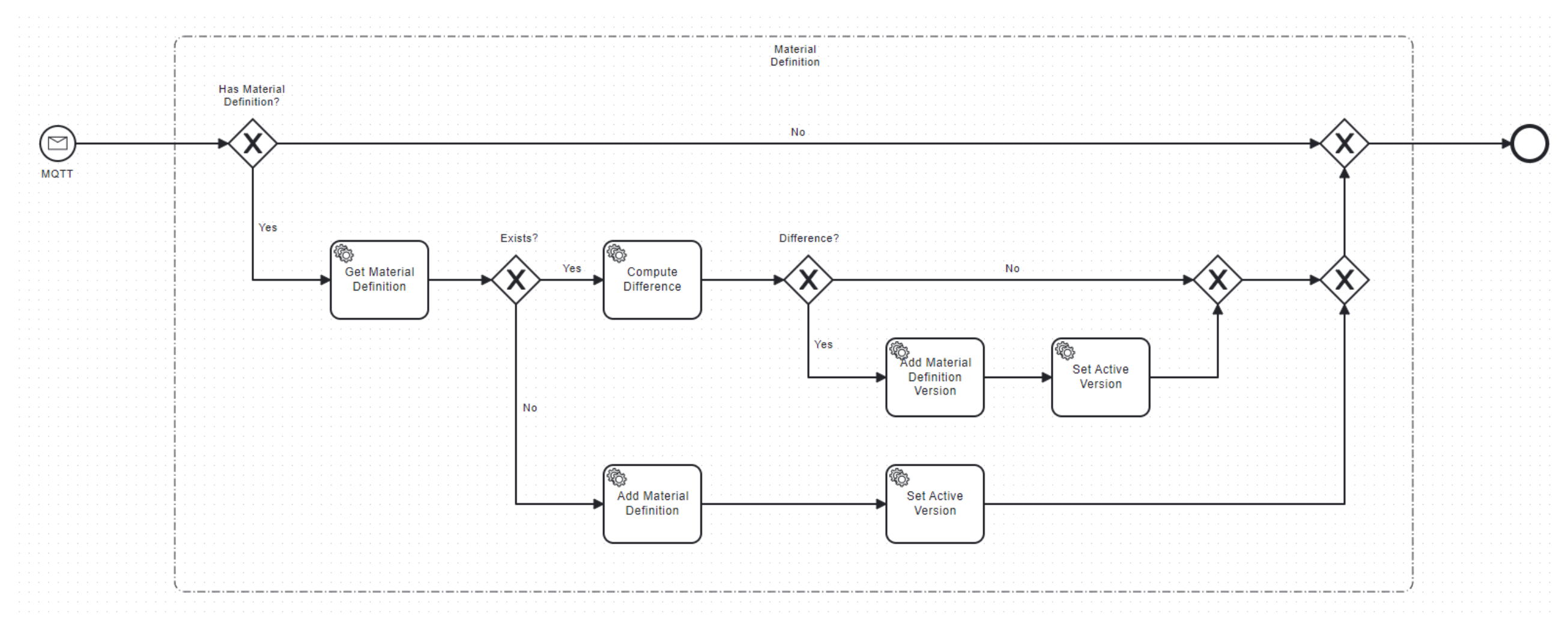
This step can involve multiple BPMN processes subscribing to different topics.
As long as the incoming event data has a common association, for example, through the id of the batch data and associated JobResponse, you can return all eBR fields in one GraphQL query—no recursive SQL joins needed.
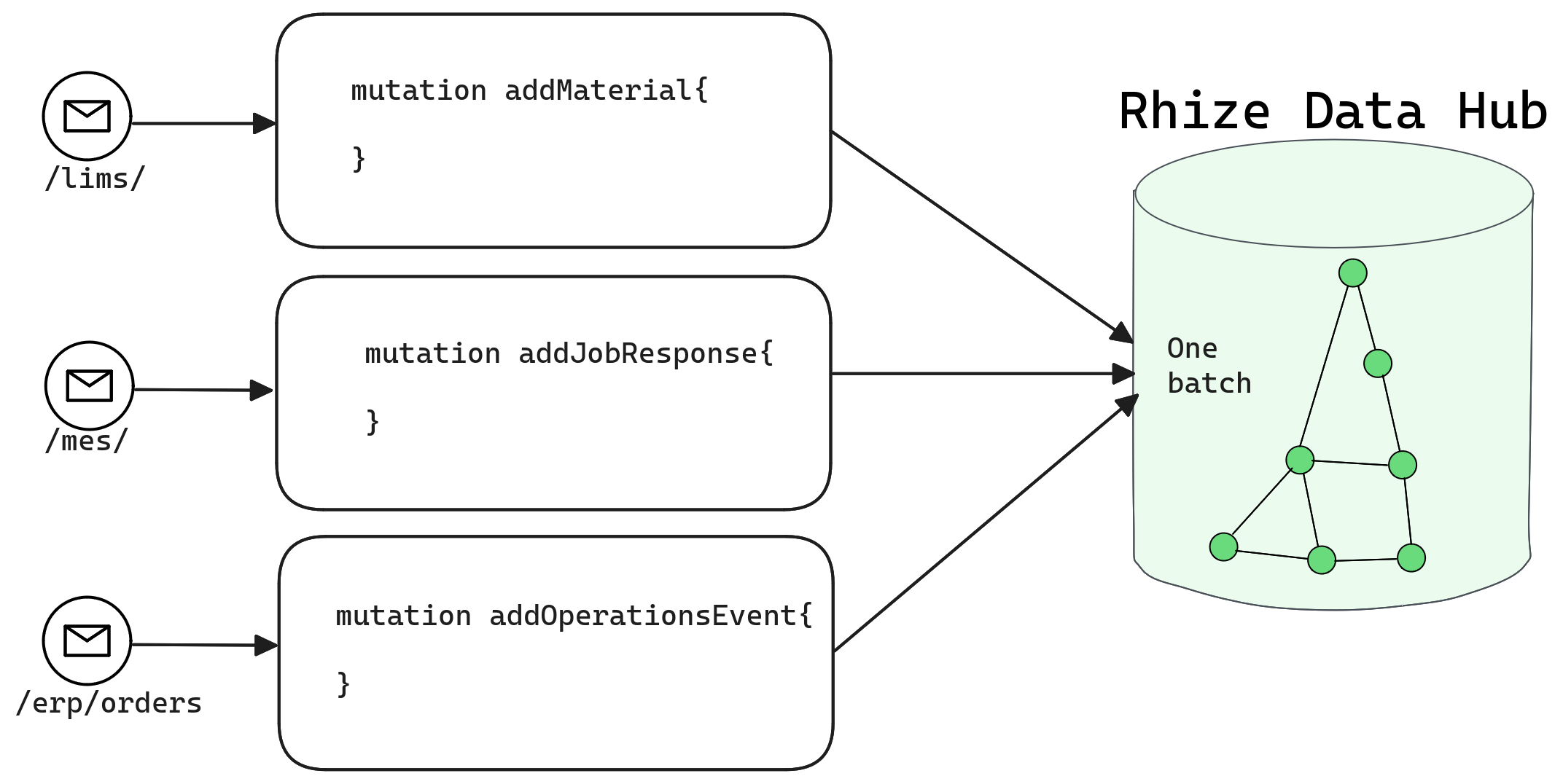
Query the DB with the eBR fields
After the batch finishes, use a GraphQL query to receive all relevant batch data. You only need one precise request to return exactly the data you specify.
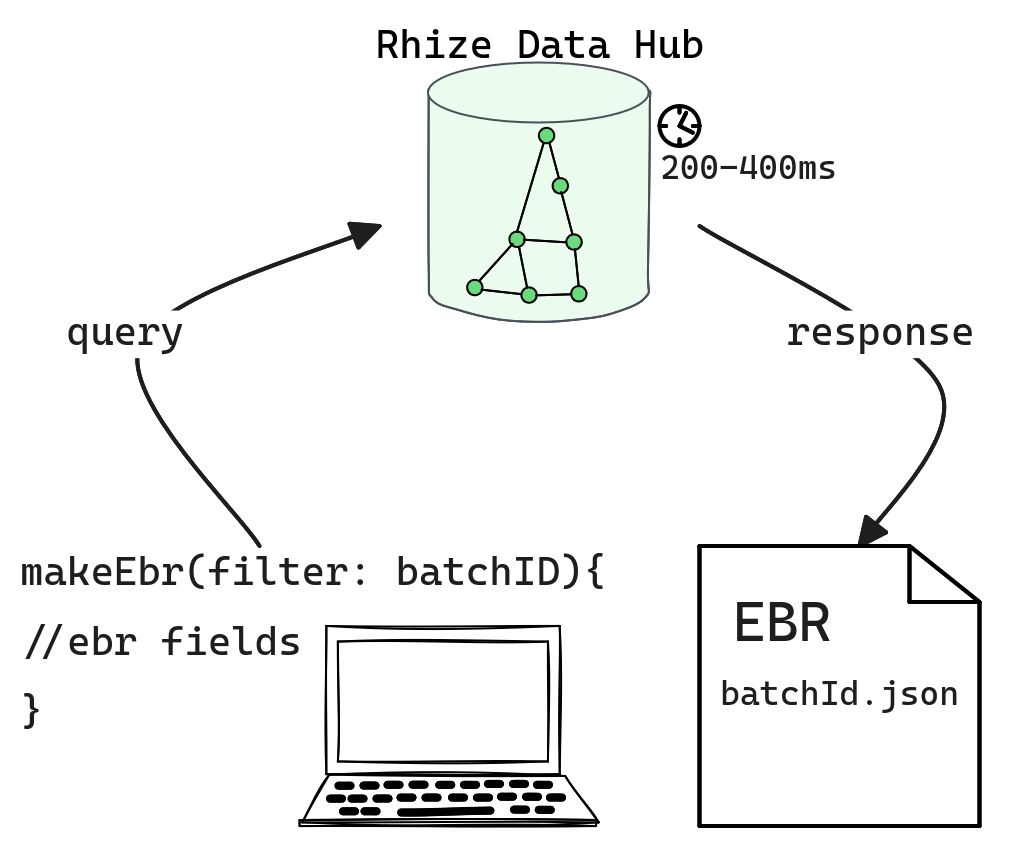
Here is a small, generic snippet of how it looks: Note how the query specifies exactly the fields to return: no further response filtering is required. For an idea of how a more complete query looks, refer to the Electronic Batch Records guide.
Snippet of a makeEbr query
query makeEbr ($filter: JobOrderFilter) {
queryJobResponse(filter: $filter) {
EXAMPLE_id: id
description
matActualProduced: materialActual(filter:{materialUse: { eq:Produced }}){
id
material: materialDefinitionVersion{
id
}
quantity
quantityUoM {
id
}
}
## More eBR fields
}
}The only extra step is to use the returned JSON object as the input for however you create your eBR documents.
Next steps
Fast eBR automation is just one of many use cases of Rhize in the pharmaceutical industry. With the same event data that you automatically ingest and filter in this workflow, you can also:
- Program reactive logic using BPMN for event orchestration. For example, you might send an alert after detecting a threshold condition.
- Analyze multiple batch runs for deviations. For example, you can query every instance of a failure mode across all laboratories.
- Compare batches against some variable. For example, you can compare all runs for two versions of equipment.